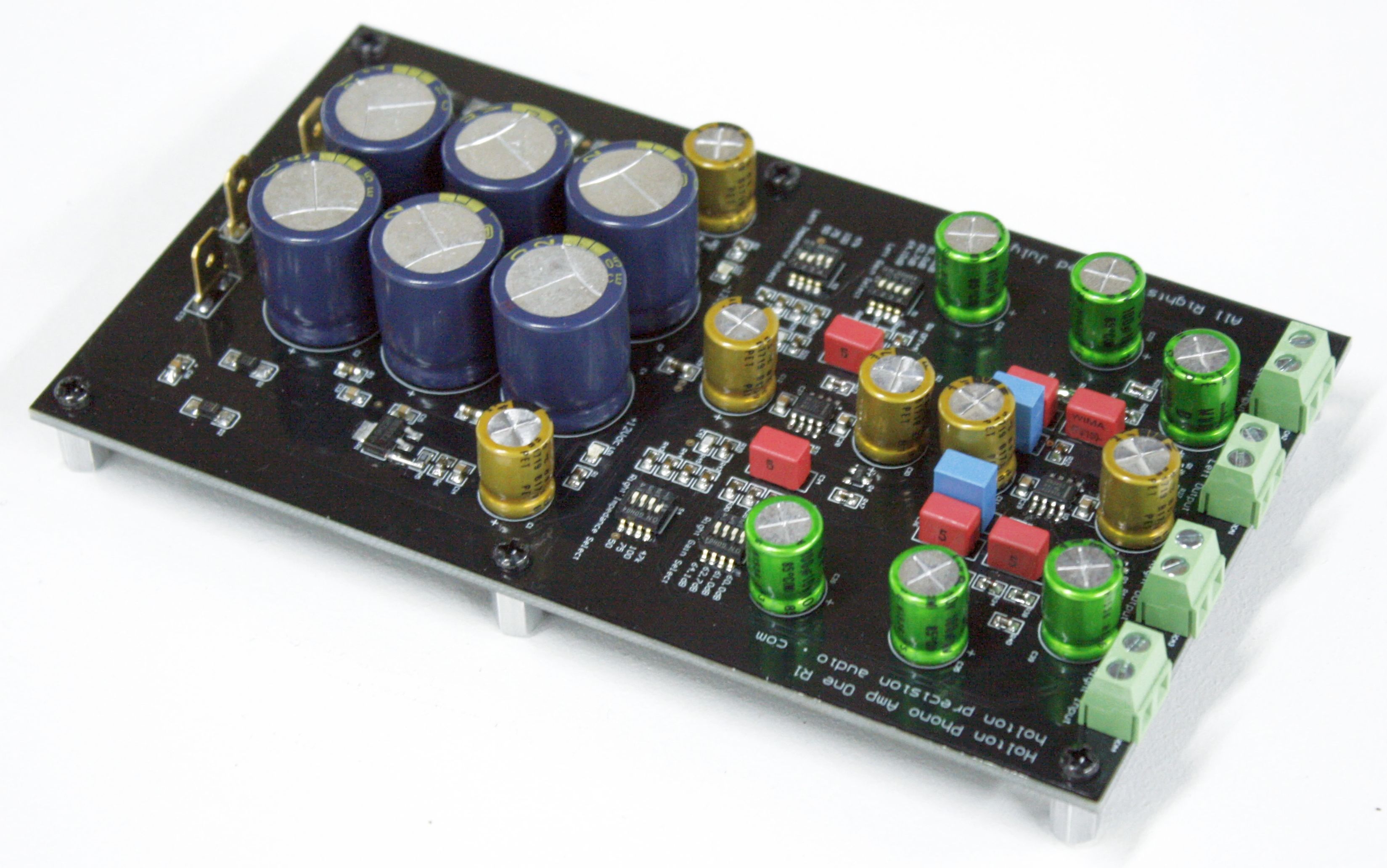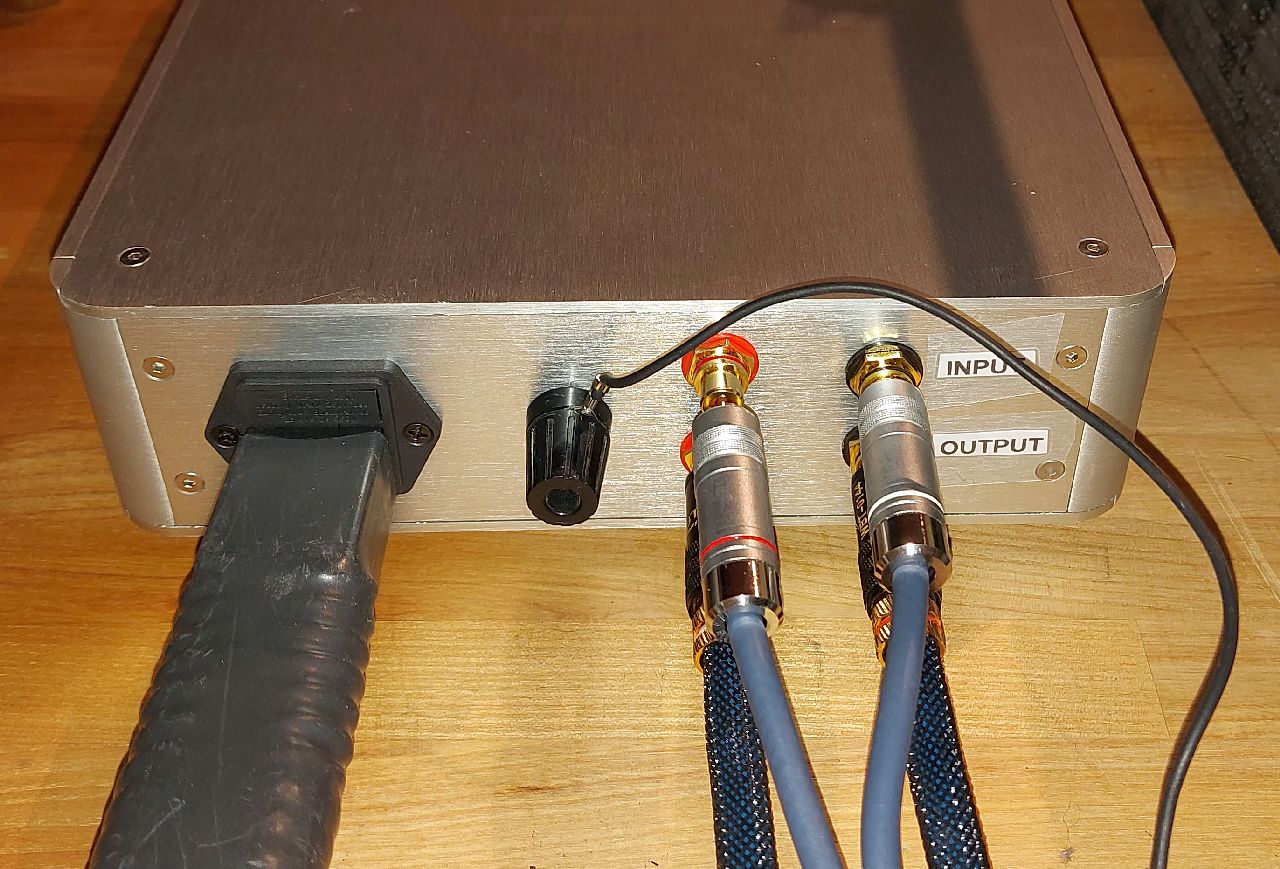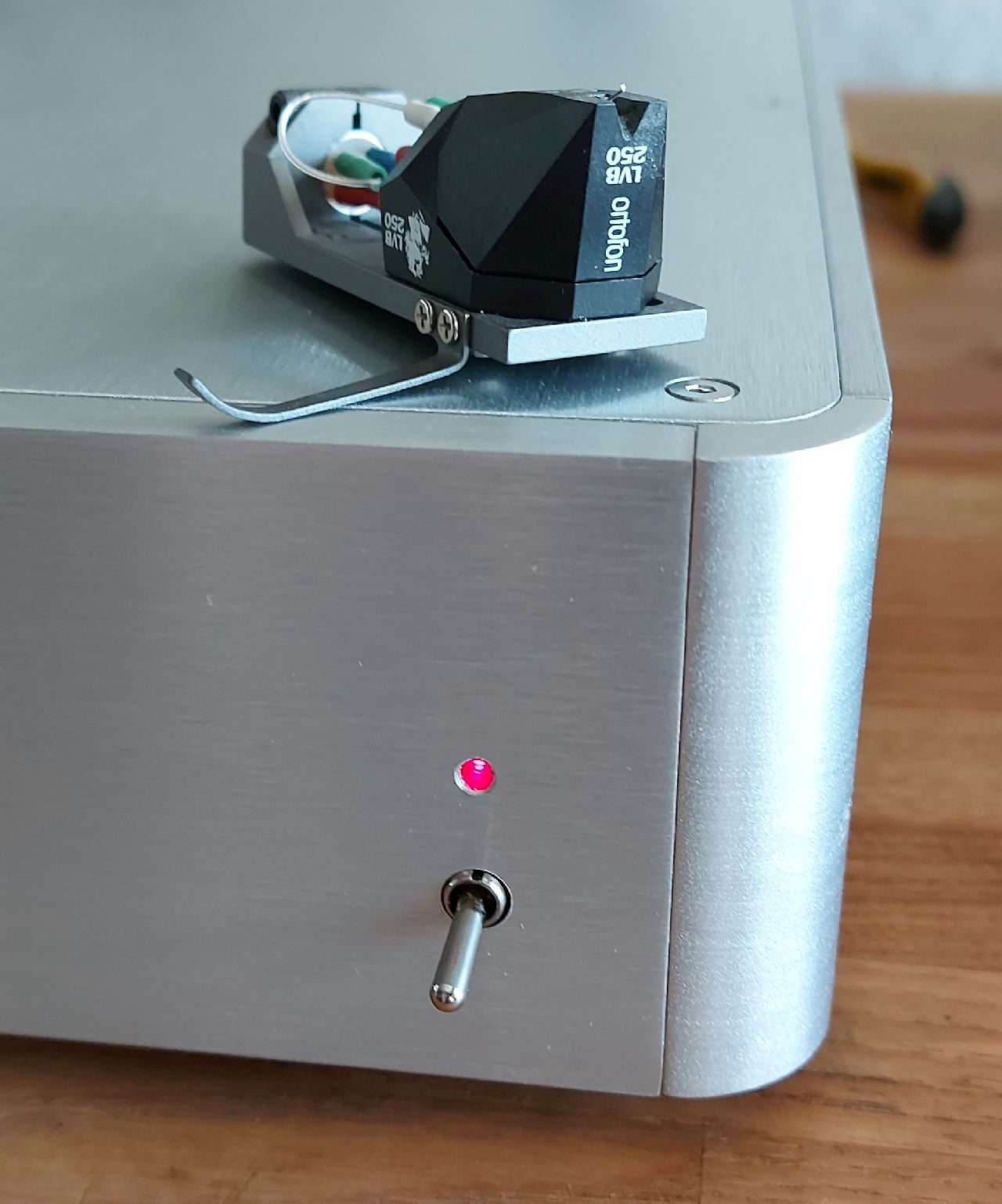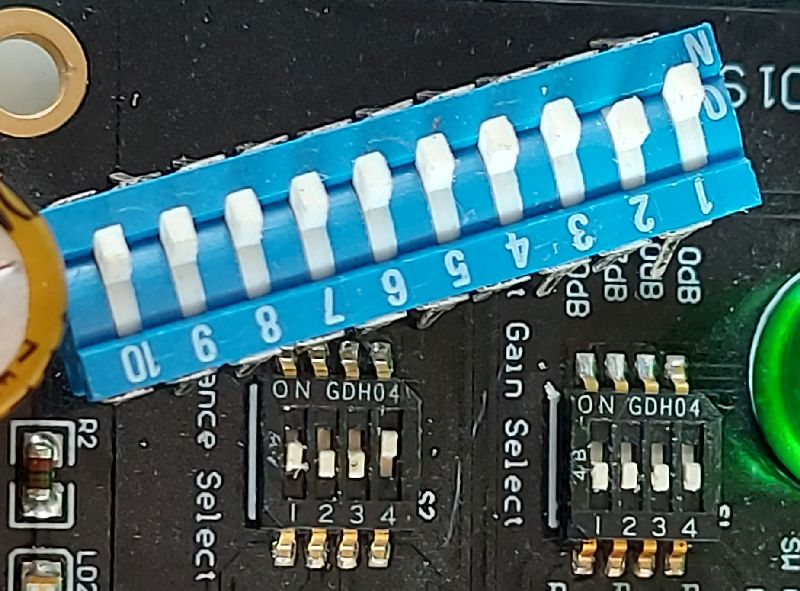![]()
https://holtonprecisionaudio.com/products/mc-mm-riaa-phono-class-a-pre-amplifier
Latest update 9 March 2021
 Australian
Holton Precision Audio should be known to anyone who has tried to hold
a soldering iron in their hand. Primarily, it is probably their many
amplifier modules that are widespread. Here we find amplifiers of less
than a few watts and up to more than 500. Lately, many other kits have
been included. All modules are "co-build". That is, you will have to
figure out all the mechanical stuff yourself. Power supply and
speaker relay circuits can also be supplied from Holton, unless
you choose something locally.
Australian
Holton Precision Audio should be known to anyone who has tried to hold
a soldering iron in their hand. Primarily, it is probably their many
amplifier modules that are widespread. Here we find amplifiers of less
than a few watts and up to more than 500. Lately, many other kits have
been included. All modules are "co-build". That is, you will have to
figure out all the mechanical stuff yourself. Power supply and
speaker relay circuits can also be supplied from Holton, unless
you choose something locally.
Here I am looking at a newer and somewhat smaller Holton construction: Holton's MC/RIAA amplifier module. On the print, a low noise regulated power supply is provided, so all it takes is a transformer and then some cables need to be soldered to in- and outputs. Holton states that a 15 VA transformer is sufficient, but again nowhere they mention the voltage? I initially I tried with 2 x 12 Volt, but as the capacitors on the print Is 25 Volt (before regulation) I decided 2 x 15 Volt would be more appropriate. It turned out that the 2 x12 Volt gave some noise, but was definitely gone with a 30 VA 2 x 15 Volt R-core transformer. Holton informs that it is also possible to power the amplifier with batteries.
Oddly enough, not much information comes with the RIAA. In fact, it's all a little sparse. Not as suitable if you haven't messed with electronics before. For example, it does not say where to find the "ground" connection on the circuit board. Common terminals for AC entry or one of the input connection at the entrance can be used. Gain and impedance switching is done via some unusually small dip switches (I had to use a magnifying glass). OK for the user who just sets the gain and impedance once, but as a reviewer who changes cartridges every day, it's completely impossible. But otherwise it was easy enough to see the settings for 60, 61, 62.7 and 64.1 dB amplification, respectively, but I just had to write to Anthony in Australia to get the promised 40 dB in the MM setting. Here all switches must be in off. Nowhere is it mentioned what happens if you turn several or all switches to "on". On the impedance side there are 47k to MM (220 pF capacitive load) as well as 100, 75 and 50 ohm for MC. Here again it is not mentioned, but if you connect 100 and 50 ohm for example, you get the parallel value – 33 ohm. If all 4 are "on", there are about 23 ohm.
The
print itself is in the usual good gold covered quality from Holton. The
two IC’s are Texas Instruments OPA1642 - an IC developed for audio and
with pretty impressive data. How the RIAA corrections are made is not
disclosed. Given the low noise and relatively high gain I would guess
at a combination of active and passive correction. I assume it is AC
coupled with a capacitor at the output, but this is not mentioned
anywhere. The power supply include two blue LEDs. The voltage is
adjusted down from about 22 Volts to an estimated 15 Volt. Signal In-
and outputs are equipped with small screw terminals. If you are not
into such things, they can be easily removed to allow
soldering.
 Holton RIAA Data:
Holton RIAA Data:
Broadband JFET Input with Class A Single Ended output stage (AC coupled?)
Amplification at 1kHz:
MM - 40 dB MC - 60 to 64 dB
Output about 300 mV at 3 mV in (MM)
THD + noise 20Hz-20 kHz - < 0.019%
RIAA deviation <+/-0.3dB Frequency range 20Hz-100 kHz
Signal/noise ratio MM - 86dB MC - >76dB
Print dimensions: HBD - 35mm x 90mm x 158mm
How I did it
The
circuit board was mounted in a suitable solid alubox from
ALIexpress. The R-core transformer comes from the same place. The
signal cables used are ordinary copper. With an insulating layer at the
bottom the RIAA board is glued in place. The same goes for the
transformer. As seen in the pictures, there is plenty of space. A power
switch and a red LED are mounted on the front (definitely not
blue!) There are no problems with noise from the
transformer. Absolutely no hum.
I
connected my Hana Umami Red cartridge to the MC input set to 64 dB
gain, a DV Karat was also tried. The new Ortofon 2M Black LVB 250 was
used with the MM input. In this position I also tried a Lundahl
LL1933Ag SUT with the Hana Umami Red.
In terms of price, some of the MC cartridges used were probably somewhat overkill, but I know their sound and thus had something to relate to.
Australian sounds
There
was definitely nothing "reversed" or upside down here. The first
impression with Hana Umami Red was a slightly sleek sound, but
absolutely zero noise. This cartridge usually delivers a somewhat
larger fuller soundstage but it is very unfair to compare with my
Accuphase RIAA at about 20 times the price of the Holton RIAA.
The
sound image behind the speakers is somewhat smaller than I am used to,
but there is a good differentiation. Things are in the right place and
with appropriate details without it becoming clinical. The top is
smooth and somewhat dry – no penchant for accents and certainly no
problems with "S-" and "T-sounds". The bottom, on the other hand, is a
little restrained, but firm and well controlled. The qualities of arm
and pickup do not come into their own right here, but neither can you
demand that. I had to try other cartridges.
A Dynavector Karat D got
in my DV 507 arm and I put one of my current favorite records on. The
new edition of Tea for the Tillerman with Jussuf/Cat Stevens. The
experience was a somewhat slimmer sound than usual and the voices
stood with slightly less weight. The soundstage was also a tad smaller
and a little more diffuse. But all in all, that's what I expected. On
the other hand, a good musical experience and and things were dry with
no extra contributions to the sound. The bottom was probably a little
restrained, but firm and well controlled. All in all, a very "easy"
rendering where it all just seemed transparent and with things under
control.
 |
|
I tried again with Umami Red, but now with Holton in the MM setting and my Lundahl SUT. There was a bit more control and weight in the bottom octaves and the image grew. I would not say that the MC setting lacks anything, rather conclude that the SUT is in a completely different quality class (as well as a different pricerange).
Now that the RIAA was set to MM, the new Ortoforn 2M Black LVB 250 came in use. It was immediately a more appropriate combination. The soundscape was a bit the same. Slightly slim but with an immediacy that conveyed the music without effort. Especially the top with this excellent MM cartridge came into its own. I played a lot of older recording and quickly went exploring my collection. This will not happen if the sound in any way does not convey a message. Older records were found - George Harrison, Suzanne Vega and Robert Plant. The latter with Band of Joy was also just tried with my Audio Technica VM95SH. Then I guess we've been all around - from true high-end to absolutely affordable. However, my VM95 has got another "wrapping" in the form of a cocobolo woodden shell. Definitely not a disadvantage. This combination understandably showed slightly less detail than Ortofon LVB - primarily the top was somewhat more fluid and laid back, and the voices stood a tad fuller and wider in the soundscape. But all in all, a combination that shows that budget hifi can easily be enjoyed.
Finally,
Ortofon LVB came back and Supertramp "Free as a Bird". A lightly
amputated band without Roger Hodgson in front, but with focus on
percussion and vocals. A somewhat overlooked and forgotten album, but
here it got new life. Good details of the impact on the percussion and
an engaging rendition. I heard both sides, so there must be something
catchy. A lot of music was listened to with these two MM cartridges!
Summing up
There
is a bit DIY before there is sound through. First, you have to wait a
few months for transport and the Danish customs clearance. Next, make
sure that all components are ready. But even for those not so
experiences with DIY, it should be possible. It is only just the input
that need to be soldered and some holes need to be drilled for the
connectors. Of course, there are deadly 230 Volts on mains, so you just
need to know what you're doing. The price depends on what you have
lying around as well as how much you want to make out of the design.
I've
been reviewing a lot of much more expensive RIAA amplifiers lately and
have to say that the Holton RIAA isn't high-end, but it's fine. The
sound leans towards the revealing and slender. Overall with a
nice smooth and clean sound. The soundstage is not the biggest I have
experienced, but there is a reasonable differentiation and overview.
 It
sounds a bit more loose in the MM setting, where there is higher to the
ceiling. Here it sounds more free and with an external SUT there was
judged a really good sound.
It
sounds a bit more loose in the MM setting, where there is higher to the
ceiling. Here it sounds more free and with an external SUT there was
judged a really good sound.
In the MC setting, it will fit well with
the more affordable MC cartridges from e.g. Denon, Hana, Ortofon or
Audio Technica. Overall, it's a fine little RIAA, as long as you don't
have to go in and set the very small switches to load and gain every
day (the picture on the right shows a "normal" dipswitch for
comparison).
BACK TO THE FRONT PAGE (in Danish)